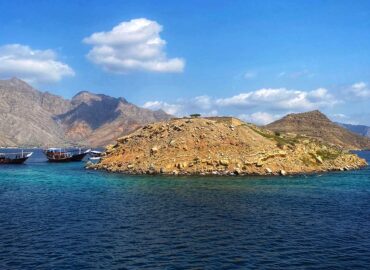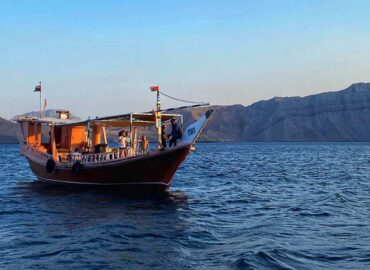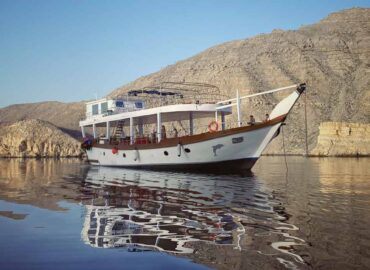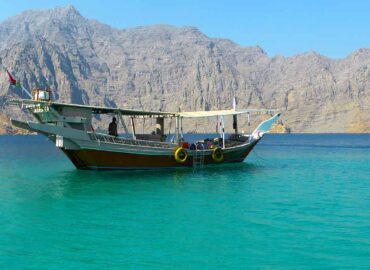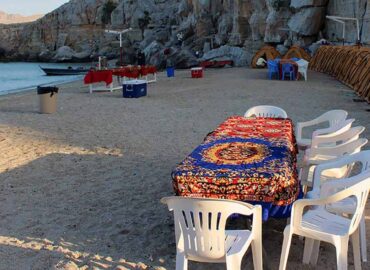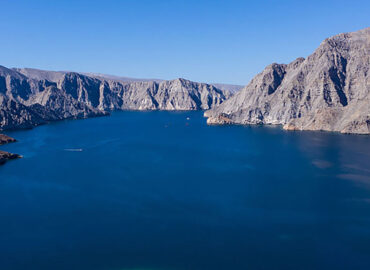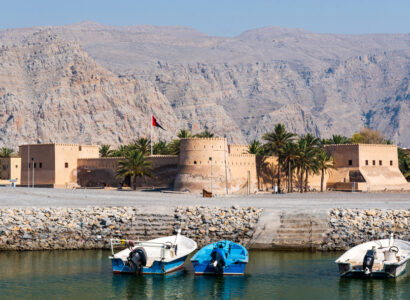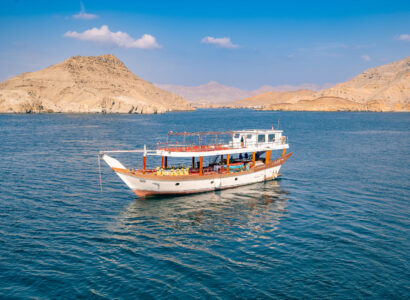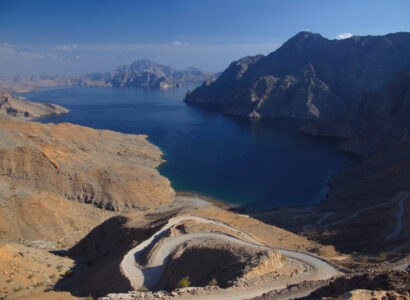What is Dhow?
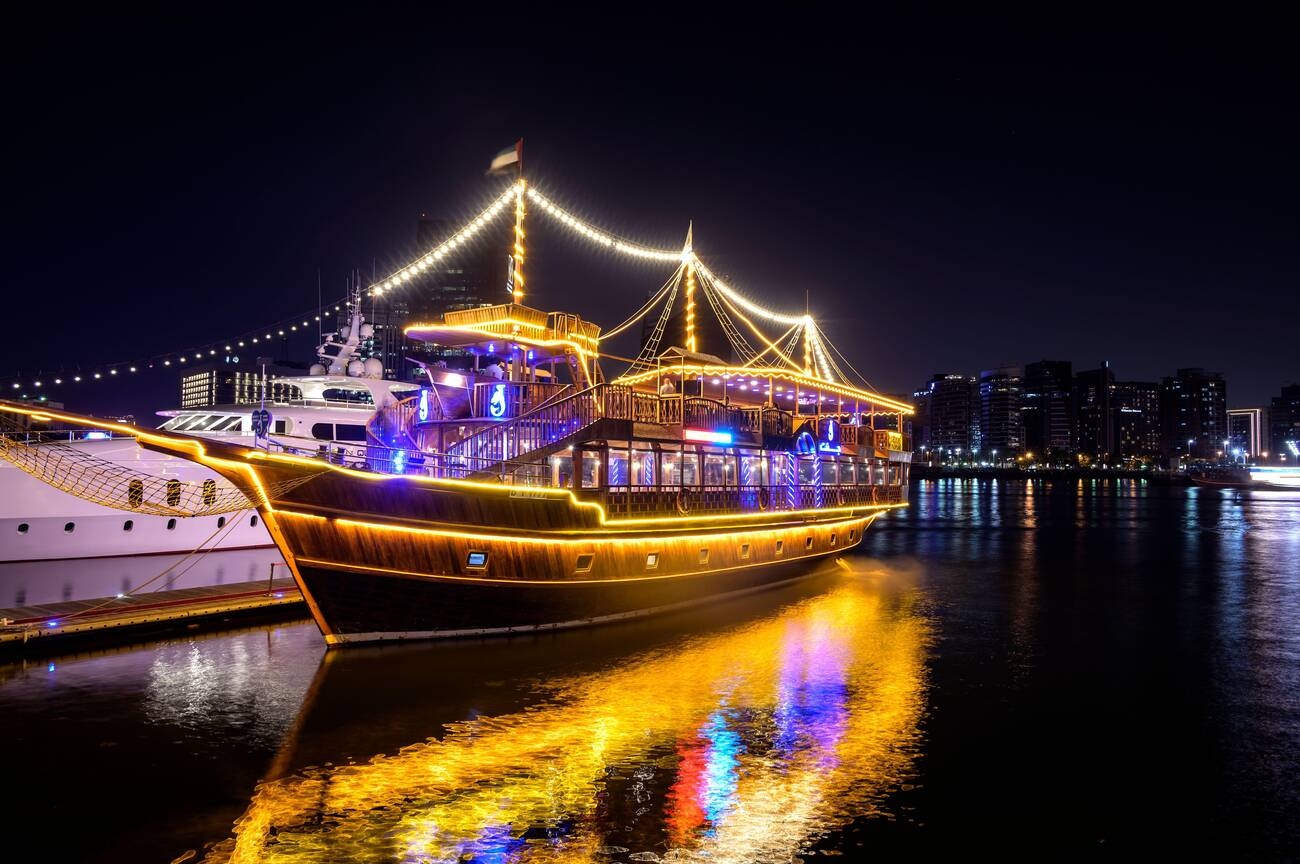
A dhow (/daʊ/; Arabic: داو, romanized: dāw) is a traditional sailing vessel used across the Red Sea Arabian Gulf and Indian Ocean for centuries. Recognized by its sharp bow sloping hull and triangular lateen sail, the dhow has been a central part of maritime trade fishing and culture for countries like Oman Yemen India and coastal regions of East Africa. These wooden boats usually built with teak and rope lashings instead of nails were used for long voyages transporting spices textiles pearls frankincense and other goods. Dhows are still seen today particularly in Oman and the Musandam Peninsula where they are used for tourism and cultural preservation.
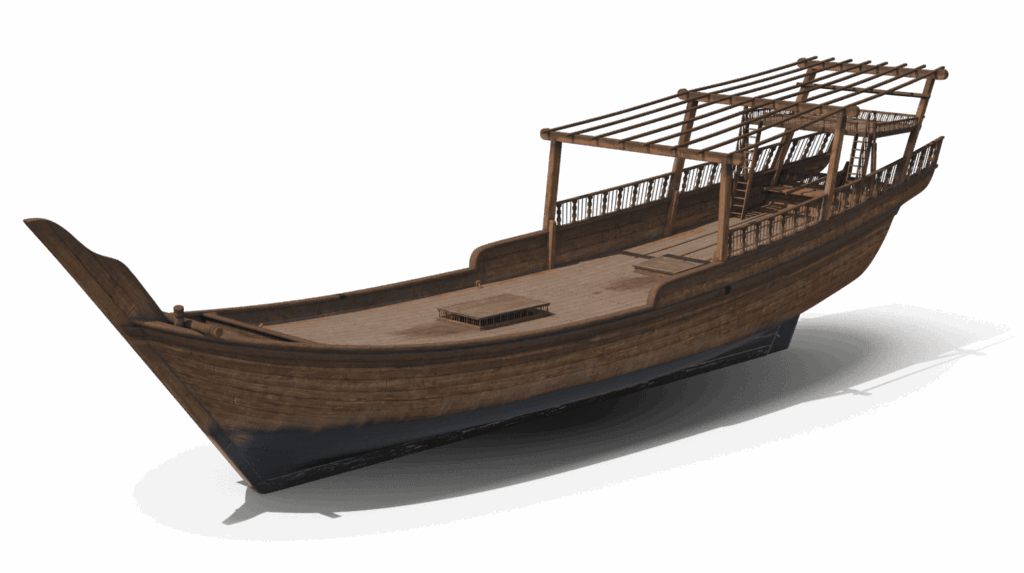
Where Did the Dhow Come From?
The origins of the dhow stretch back thousands of years. While the exact date of its invention is unknown historians generally agree that the dhow emerged between 600 BCE and 600 CE likely in the Indian subcontinent. Early forms were possibly influenced by Egyptian or Phoenician boats. Some historians argue that the Swahili term “daw” meaning vessel may be the origin of the word “dhow.” Arab seafarers quickly adopted and refined the dhow using it to navigate monsoon winds and establish trade routes between Arabia, East Africa, India and Southeast Asia. By the 7th century, these boats had become the standard means of transport and trade in the region.
What Are the Different Types of Dhows?
There are many different types of dhows each adapted to specific needs. The boom is one of the largest types and was used for long voyages. It features a high prow and symmetrical shape. The sambuk is a versatile dhow often used for fishing and coastal trade. The baghlah is a deep sea dhow traditionally used for long distance trade. The shu’ai and badan are smaller dhows commonly used for fishing and pearl diving. The jaliboot or jelbut is a more modern version of the dhow often fitted with motors. Each type varied in size number of masts hull shape and use depending on the region and purpose.
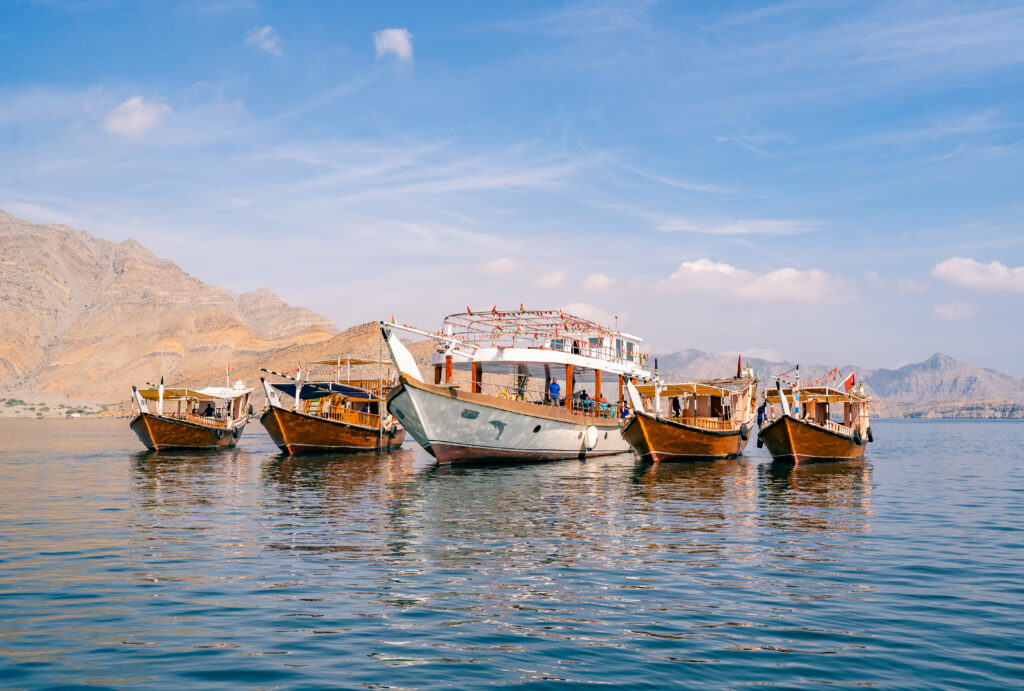
Why Is the Dhow Culturally Important in Oman?
In Oman the dhow is much more than a means of transport. It is a national symbol and a living representation of the country’s maritime past. Dhows were key to Oman’s wealth during the days of the frankincense trade. Omanis used them to connect ports across East Africa the Arabian Gulf and India. Pearl diving was another central industry where dhows played a major role. Divers would go on long expeditions staying at sea for months using dhows as floating bases. Songs stories and traditions grew around this maritime lifestyle and are still remembered today. The dhow is often celebrated in Omani art poetry and festivals. Its image appears in souvenirs paintings fabrics and even government logos. In places like Khasab in Musandam the tradition of dhow building and sailing is still maintained.
How Were Dhows Traditionally Built?
Building a dhow was traditionally a community event. In Oman Yemen and parts of India like Kerala specialized shipbuilders would come together to craft these boats by hand. The hulls were usually made from teak wood sourced from India and East Africa known for its durability and resistance to seawater. In the past planks were fastened together using coconut rope and wooden dowels rather than nails. The curved shape of the dhow allowed it to glide efficiently over water and handle rough seas. Its large lateen sails often made of cotton could catch the monsoon winds from different directions making it ideal for long voyages. A well made dhow could take months or even a year to complete depending on its size.
How Did Sailors Navigate Dhows Without Modern Tools?
Before the invention of modern navigation tools dhow sailors used the stars to find their way. The kamal a simple wooden tool with string helped sailors measure the angle between the horizon and the North Star to determine their latitude. Sailors relied on deep knowledge of currents wind patterns and coastal landmarks. These skills were passed down from generation to generation. Dhows typically sailed south with the northeast monsoon winds in winter and returned north with the southwest monsoon in summer. This rhythm of sailing became the backbone of trade across the Indian Ocean for centuries.
What Was the Dhow’s Role in Trade and the Economy?
From ancient times to the early 20th century dhows were the main vessels for transporting goods across the Indian Ocean. Omanis used dhows to export frankincense dates and horses while importing spices cloth rice and other goods from India and Africa. The exchange helped build strong economic and cultural ties across the region. In East Africa especially along the Swahili coast dhows played a central role in trade and communication. Goods ideas and cultures flowed across the ocean thanks to these wooden vessels.
How Are Dhows Used Today?
Today dhows have taken on a new role. While some are still used for fishing and cargo many have been transformed into tourist boats. In Musandam and Khasab visitors can take dhow cruises through the fjords watching dolphins swimming snorkeling and enjoying traditional food onboard. These tours preserve the cultural identity of the dhow while supporting the local economy. Modern dhows may have motors and modern comforts but their design remains faithful to tradition. They still feature hand carved wood curved bows and large open decks. Some are used as floating restaurants museums or event venues.
Is Dhow Building Still Practiced Today?
Dhow building continues in certain places especially in Sur Oman and Beypore India. These shipyards keep the centuries old craft alive. Though modern materials and engines have been introduced traditional techniques are still respected. Local governments and cultural organizations now support dhow festivals workshops and boat races to keep this heritage alive.
Why Are Dhows Important for Culinary History?
Dhows were responsible for carrying ingredients that shaped food cultures across continents. Spices from India grains from Africa dried fish rice and more were exchanged regularly through dhow trade. For chefs and food lovers understanding the dhow’s role in culinary history helps connect the journey of ingredients with the flavors they create.
Why Does the Dhow Still Matter?
Despite new technology and modern ships the dhow continues to be important. It reminds people of their past their ancestors and their traditions. It brings together old and new trade and tourism craftsmanship and storytelling. The dhow is more than a boat it is a floating memory.
Conclusion: The Story Lives On
The dhow is not a boat. It is a link between past and present culture and commerce people and places. Its shape may be simple but its story is rich. Whether used for trade fishing or tourism the dhow continues to sail forward.
For those who want to experience the real spirit of Oman a cruise with Dhow Khasab Tours is more than a scenic ride it is a step into history. Book your dhow tour today and sail through stories that still float on the sea.
Share this post
KHASAB MUSANDAM TOUR PACKAGES
Have you ever been to Norway? Musandam Khasab dhow cruise tour brings you an opportunity to explore the “Norway Of Arabia”. Book a Khasab dhow cruise and we bet you will fall in love with the beauty of Khasab Musandam.

